VISUAL ARTS PAPER 1 GRADE 12 QUESTIONS - AMENDED SENIOR CERTIFICATE EXAMS PAST PAPERS AND MEMOS MAY/JUNE 2018
Share via Whatsapp Join our WhatsApp Group Join our Telegram GroupVISUAL ARTS
PAPER 1
GRADE 12
AMENDED SENIOR CERTIFICATE EXAMS
PAST PAPERS AND MEMOS
MAY/JUNE 2018
INSTRUCTIONS AND INFORMATION
In this examination you must demonstrate the following skills:
- Using the correct art terminology
- Using and implementing visual analysis and critical thinking
- Writing and researching within a historical and cultural context
- Placing specific examples in a cultural, social, political and historical context
- Understanding distinctive creative styles
Read the following instructions before deciding which questions to answer.
- This question paper consists of EIGHT questions.
- Answer any FIVE questions for a total of 100 marks.
- Number the answers correctly according to the numbering system used in this question paper.
- Questions appear on the left-hand pages, with visual sources on the right-hand pages.
- Ensure that you refer to the visual sources reproduced in colour where required.
- Information discussed in one answer will NOT be credited if repeated in other answers. Cross-referencing of artworks is permissible.
- Name the artist(s) and title of each artwork you discuss in your answers. Underline the title of an artwork or the name of a building.
- Write in a clear, creative and structured manner, using full sentences and paragraphs according to the instructions of each question. The listing of facts/tables is NOT acceptable.
- Use the following guidelines for the length of your answers. Note the mark allocation.
- 6–8 marks: a minimum of ½–¾ page (paragraph)
- 10–14 marks: a minimum of 1–1½ page(s) (short essay)
- 20 marks: a minimum of 2 pages (essay)
- Write neatly and legibly.
QUESTIONS
ANSWER ANY FIVE QUESTIONS.
QUESTION 1: THE VOICE OF EMERGING ARTISTS
Read the poem below and answer the questions.
TRAVEL – Edna St Vincent Millay The railroad track is miles away, All night there isn't a train goes by, My heart is warm with friends I make, |
1.1 Visualise the poem above and select ONE phrase for EACH artwork (FIGURE 1a and FIGURE 1b). Motivate your choice by referring to the imagery, mood and atmosphere of the artwork. (6)
1.2 Compare the imagery in EACH artwork by referring to the focal point, composition and use of colour. (6)
1.3 Interpret the work of ONE artist you have studied, who comments on his/her daily experiences.
Include the following in your answer:
- Influences
- Formal art elements
- Media and technique
- Style
- Possible messages/meanings (8) [20]
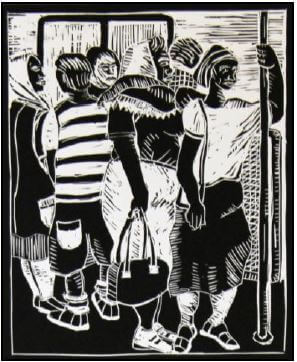
FIGURE 1a: Lionel Davis, Train Ride, linocut, 2012.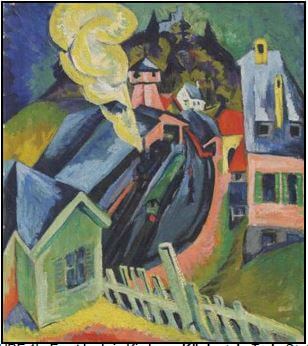
FIGURE 1b: Ernst Ludwig Kirchner, Königstein Train Station, oil on canvas, 1916.
QUESTION 2: SOUTH AFRICAN ARTISTS INFLUENCED BY AFRICAN AND/OR INDIGENOUS ART FORMS
Pablo Picasso's artwork Les Demoiselles d'Avignon (FIGURE 2b) is regarded as one of the most important artworks of the 20th century and is the first international work to show an extensive African influence, whereas Irma Stern had first-hand experience of Africa due to her extensive travels around this continent. |
2.1 Both artists used the nude body. How do the composition and mood of FIGURE 2a and FIGURE 2b differ? (4)
2.2 Discuss the style with which, and the manner in which, the artists approached their subject matter. (4)
2.3 Discuss TWO artworks by different artists whose work shows evidence of an African/indigenous influence.
Use the following guidelines:
- Influences
- Style and technique
- African signs/symbolism
- Possible messages/meanings (12) [20]
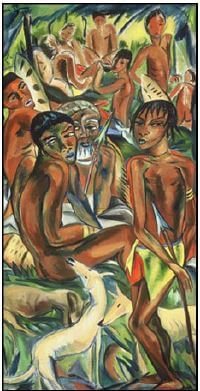
FIGURE 2a: Irma Stern, The Hunt, oil on canvas, 1929.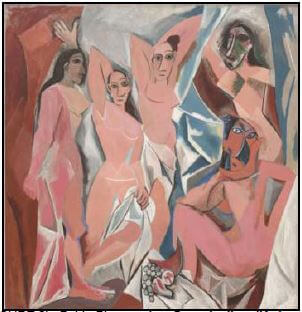
FIGURE 2b: Pablo Picasso, Les Demoiselles d'Avignon, oil on canvas, 1907.
QUESTION 3: SOCIO-POLITICAL ART, INCLUDING RESISTANCE ART OF THE 1970s AND 1980s
Debris (rubbish/trash) and unwanted objects are used by both Penny Siopis and Fabrice Monteiro to comment strongly on sociopolitical issues in their artworks. |
3.1 Compare FIGURE 3a and FIGURE 3b.
Refer to the following guidelines:
- The placement/positioning and significance of the figure in EACH work
- The purpose of the drapery, or the lack thereof, in FIGURE 3a and FIGURE 3b
- The relevance of the title of EACH artwork
- What social issues has the artist addressed in FIGURE 3a and FIGURE 3b?
- Identify any object(s) that had been thrown away in FIGURE 3a and recycled in FIGURE 3b. Motivate your selection. (8)
3.2 Discuss TWO artworks you have studied which reflects resistance/ sociopolitical issues. (12) [20]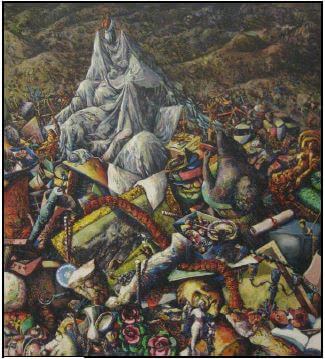
FIGURE 3a: Penny Siopis, Piling Wreckage upon Wreckage, oil on canvas, 1989. (Wreckage: the remains of something that has been badly damaged) 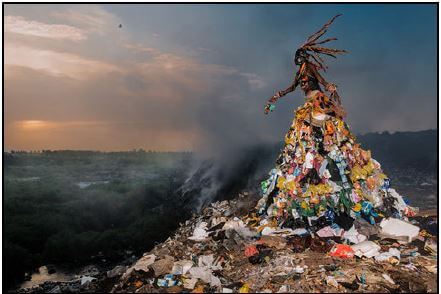
FIGURE 3b: Fabrice Monteiro, The Prophecy Series, 'Untitled', photograph, 2014. (Prophecy: a prediction of what will happen in the future)
QUESTION 4: ART, CRAFT AND SPIRITUAL WORKS MAINLY FROM RURAL SOUTH AFRICA
Esther Mahlangu comes from a Ndebele background with a rich tradition of arts and crafts (FIGURE 4a). However, she has also become an acclaimed visual artist exhibiting all over the world using her familiar patterns and designs in a contemporary way. |
4.1 What would you see as the characteristics of the work of Esther Mahlangu? Consider the following:
- Art elements
- Materials and techniques
- Style and context
- The 'connection' between the past and the present in her artworks (10)
4.2 Discuss the work of TWO art, craft or spiritual artists who have used traditional methods to create their artworks.
Refer to the following in your discussion:
- Materials and techniques
- Possible influences
- Themes/subject matter
- Possible messages/meanings
- How these works have been influenced by the artists' cultures (10) [20]
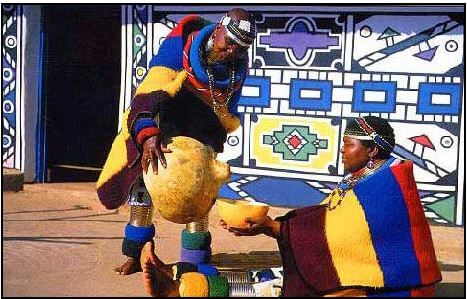
FIGURE 4a: Esther Mahlangu in front of her Ndebele homestead, Mpumalanga, 2007. 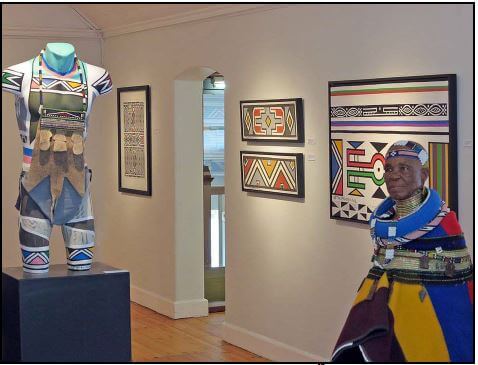
FIGURE 4b: Esther Mahlangu photographed at her 80th birthday, solo exhibition, Irma Stern Museum in Cape Town, South Africa, 2015.
QUESTION 5: MULTIMEDIA AND NEW MEDIA – ALTERNATIVE CONTEMPORARY AND POPULAR ART FORMS IN SOUTH AFRICA
The heritage of Surrealism is still being used by contemporary artists through their juxtaposition/contrast of different materials and unrelated images. |
5.1 Discuss the juxtaposition/contrast in FIGURES 5a to 5d by referring to the following:
- Symbolism and imagery
- Materials and textures
- Possible meaning and messages (10) .
5.2 Interpret any TWO artworks by different South African artists who use alternative/new media in search of ways to communicate issues. (10) [20]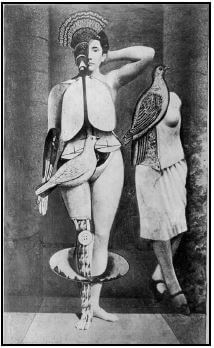
FIGURE 5a: Max Ernst, Sacred Conversation, collage photomontage, 1921. 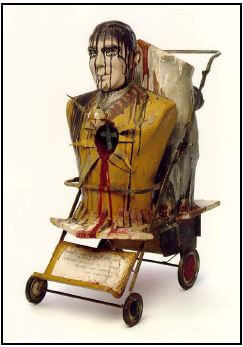
FIGURE 5b: Edward Kienholz, John Doe, oil paint, metallic paint, resin, plaster and graphite on mannequin parts with wood, metal, plastic, paper, rubber and stroller, 1959. 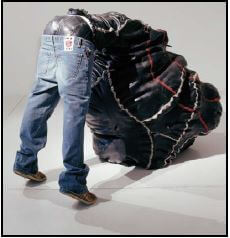
FIGURE 5c: Patrick Bongoy, Revenants III, mixed media, recycled rubber and hessian on a fiberglass cast, 2017. 
FIGURE 5d: Nicholas Hlobo, Ndiyafuna (I Am Looking for Something), fibreglass, rubber inner tube, ribbon, jeans, sneakers, lace and wood, 2006.
QUESTION 6: POST-1994 DEMOCRATIC IDENTITY IN SOUTH AFRICA
South Africa's democracy is based on a compromise between diverse political groups and the acceptance of our differences. – William Gumede |
6.1 Discuss how Witbooi in FIGURE 6a sees democracy in South Africa by referring to the following:
- Colour
- Influences
- Meaning and symbolism of the:
- Blindfolded figure
- Scales
- Tightrope
- Images in the background
- Different styles in the artwork
- Comment on the message the artist wanted to convey. (10)
6.2 Analyse the work of any TWO artists you have studied, whose works comment on the post-1994 identity of South Africa.
You may use the following ideas in your answer:
- Content of artworks and images
- Medium, style and techniques
- How the artists reflect their own questioning of the world and the spaces they occupy in South Africa, both physically and emotionally. (10) [20]
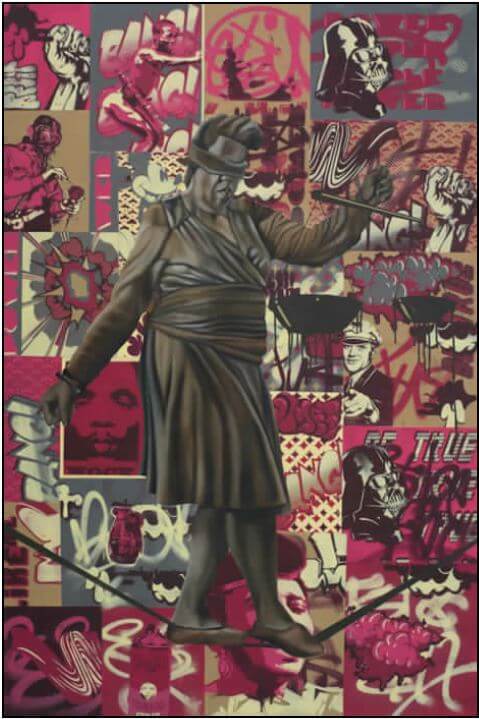
FIGURE 6a: Khaya Witbooi, Below the Law, stencilling and paint, 2014.
QUESTION 7: GENDER ISSUES: MASCULINITY AND FEMININITY
| Rather than following traditional gender roles, people interpret it in a personal way. As a result, gender roles and stereotyping are fading and pushing the boundaries of what it means to be feminine or masculine. |
Discuss the statement above and write an essay in which you comment on the way in which these gender boundaries are being questioned/pushed.
Refer to FIGURE 7a and FIGURE 7b, as well as any TWO artists who you have studied who comment on gender to substantiate your answer.
You may use the following as a guideline in your essay:
- Significance of colour
- Imagery and the possible interpretations thereof
- How the artists portray the attributes of masculinity and/or femininity:
- Comment on the word play of 'chic(k)' in the title of FIGURE 7a
- The significance of the clothing
- The mood created through facial expressions
- Relevance of the posture/gesture [20]
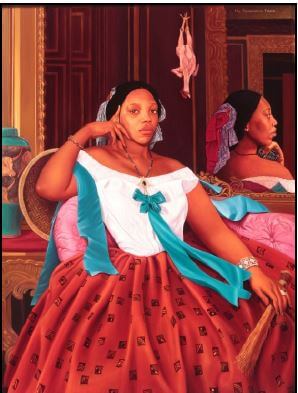
FIGURE 7a: Nicholas Allen, L'Hommage à Ingres: African Chic(k): Ms Tshegofatso Phage Seated, oil on canvas, 2013. 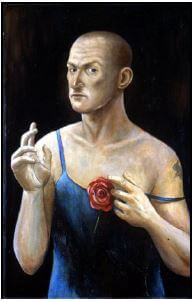
FIGURE 7b: John Kirby, Self-portrait, oil on canvas, 1987.
QUESTION 8: ARCHITECTURE IN SOUTH AFRICA
Each new situation requires a new architecture. – Jean Nouvel |
8.1 Refer to the statement above and the images in FIGURES 8a and 8b and write a short essay in which you comment on how 'new architecture' is being used for shelter and accommodation in South Africa.
Respond to the following in your answer:
- The positive and negative aspects of using shipping containers as the answer to the housing crisis in South Africa
- Compare FIGURES 8a and 8b by discussing the aesthetic appeal of both buildings due to their modification.
- If you had the opportunity to live in a shipping container, what modifications would you suggest to make your home as functional as possible? (8)
8.2 Discuss the work of any architect you have studied whose work reflects a new approach to architecture that could satisfy the needs of a growing South African society.
Use the following guidelines to support your answer:
- Site and positioning
- Use of building materials
- Design and functionality
- Inspiration and influences
- How the architect has specifically addressed/considered the needs of the South African society
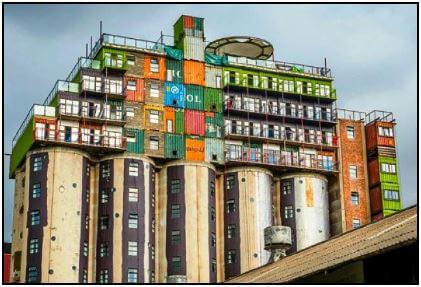
FIGURE 8a: Citiq Property Services (Pty) Ltd, Mill Junction, Johannesburg, Newtown, old mill and shipping containers, 2014. 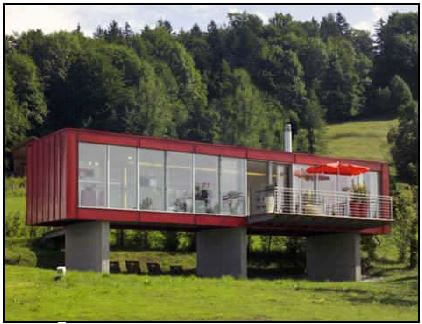
FIGURE 8b: Espace Mobile designed this retro-looking prefabricated house. It is located in the Austrian countryside, 2007.
TOTAL: 100